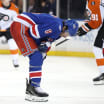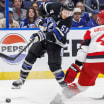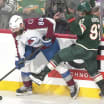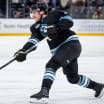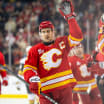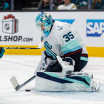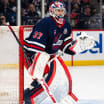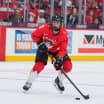The Coaches Room is a regular feature throughout the 2021-22 NHL season by former NHL coaches and assistants who will turn their critical gaze to the game and explain it through the lens of a teacher.
In this week's edition, Dave Barr, former assistant with the Colorado Avalanche, Minnesota Wild, New Jersey Devils, Buffalo Sabres and San Jose Sharks, goes over everything a coaching staff, specifically assistant coaches, are tasked with doing between games.
Coaches stay just as busy on days off as they do during games
Barr details heavy workload assistants have preparing players for next opponent
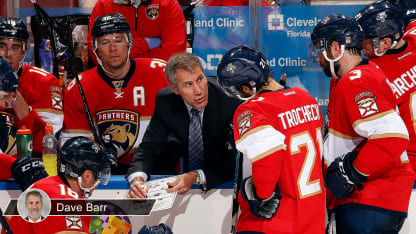
By
Dave Barr
Special to NHL.com
I've thought about what we do on a daily basis as coaches, everything we do, and I don't know if the fans, the readers, have any clue what we really do.
I thought it would be interesting to go through what assistant coaches are tasked with doing for a team that, for example, played Wednesday at home and then has another game Friday at home.
To start, the assistant coach running the power play would come in Thursday and break down everything that happened on the power play in the game Wednesday: what went well, what didn't go well and why.
But he already has a head start on that process, having reviewed the power play between periods Wednesday and possibly after the game as well, so he has a good idea of what was working and what needs tweaking before coming in Thursday to break it all down.
The coach knows they're playing again Friday, so in addition to breaking down the power play he starts looking at the next opponent's penalty kill and what they do. Is it a 1-3? Is it a box? Do they chase down the ice? All these little things make a big difference to the players.
There's also an assistant who runs the penalty kill trying to organize himself based on what happened during the game Wednesday and what to expect Friday. Then there's also 5-on-5, which typically is worked on by the head coach and the video coach.
The video coach and the head coach will look at video of all the systems, including breakouts, forecheck, neutral-zone transition, offensive-zone play, defensive-zone play, chances against, chances for, face-offs, etc. It's all-encompassing.
The assistants also will look at individual video clips to show certain players things from different aspects of the game, whether they're systematic or philosophical from what they know the head coach prefers.
A big part of the game is face-offs. Players take pride in it individually.
On Thursday, the assistant coach has to prepare video clips to show the centers what to expect from the next opponent and will load those on an iPad the players have access to.
The players will get the iPad on Friday after working on various techniques at the morning skate. The assistant will put together clips of various face-offs, from the offensive zone and defensive zone, including multiple looks from each side.
You win two or three more face-offs because of the information that was relayed and that could be the difference in a game.
So much of this is schedule-based, because if you're playing Wednesday, Friday and Saturday, you're cramming so much into a tiny little space. How much information can the players take in? That's the question you must answer; what is most important and why?
The coaching staff typically will arrive at the rink around 7 a.m. Thursday to be there at least an hour and a half if not two hours before the players arrive so they can be prepared.
When showing individual clips to players, I've found that with NHL players, showing them the positive plays or the progress they've made works best. They aim to please, and this form of accountability seems to work well.
When you leave a conversation with an NHL player, the goal is to make sure he walks away feeling informed and good about what he's doing and where he's going with his game.
Most players are receptive to video and coaching in general. They like to see what they've done right and what they could do better. They like to see what they should expect in the next game.
For example, when we show them a team pinching or not pinching, it makes a big difference in what a winger can expect during a game.
The key on the day between games, in this case Thursday, is to have some sort of communication with the players you want to reach.
It could be as simple as walking into the dressing room, making some small talk and then going over what you wanted to talk to them about without a laptop or iPad.
It could be going to them in the dressing room and sitting down to show them a few clips of something you liked in their game, improvements you saw or something you think they could benefit from watching.
These clips are strictly individual based. For example, I would show the same clip of one specific player driving the net to another six or seven players because it's about what they could or should be doing.
One of the things we have to do as assistants is find these guys before they leave the rink. They're pulled in a lot of different directions and time at the rink is limited, so we could just say to them, 'Hey, don't leave until you see me for five minutes.'
Before every game there is a video of the opposition's starting goalie running on a loop in the dressing room showing goals scored on him, hoping to show tendencies or flaws. It's amazing what happens when you see 20 goals scored on one guy; 12 of them might be over his left shoulder and players notice that.
On that goalie loop there also will be shootout goals against him, because that extra point matters.
When we get to game day, that's when we're showing what our opponent is going to do in various situations like face-offs at even strength and on special teams, player tendencies we have to be aware of when the puck goes to certain areas of the ice, breakouts that have been successful against the opponent and breakouts that haven't worked.
If we did things well in the previous game, we'll show that too.
There also are times on game day when you find something really important for a specific individual and you will try to chase him down to relay that information. It could be that essential to the game that night.
The cycle continues for an 82-game grind that we all love.
